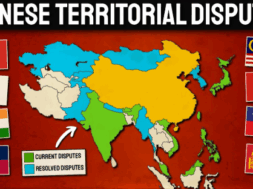
World Population Day: In numbers, India to surpass China this year, says the UN
Virendra Pandit
New Delhi: As the world population is forecast to reach the eight billion mark by November 15, 2022, India is projected to surpass China as the most populous country in 2023, the United Nations said on Monday, World Population Day.
The World Population Prospects 2022, released by the United Nations Department of Economic and Social Affairs, Population Division, said the global population is growing at its slowest rate since 1950, having fallen under one percent in 2020. The latest projections suggest it could grow to around 8.5 billion in 2030 and 9.7 billion in 2050, the media reported.
Also, the world population may reach a peak of around 10.4 billion people during the 2080s and remain at that level until 2100.
“This year’s World Population Day (July 11) falls during a milestone year when we expect the birth of the Earth’s eight billionth inhabitant. This is an occasion to celebrate our diversity, recognize our common humanity, and marvel at advancements in health that have extended lifespans and dramatically reduced maternal and child mortality rates,” UN Secretary-General António Guterres said.
“It is a reminder of our shared responsibility to care for our planet and a moment to reflect on where we still fall short of our commitments to one another,” he added.
The world’s two most populous regions in 2022 were Eastern and South-Eastern Asia, with 2.3 billion people representing 29 percent of the global population, and Central and Southern Asia, with 2.1 billion, or 26 percent of the total world population.
China and India accounted for the largest populations in these regions, with over 1.4 billion each in 2022.
Over half of the projected increase in global population up to 2050 will be concentrated in just eight countries: the Democratic Republic of the Congo, Egypt, Ethiopia, India, Nigeria, Pakistan, the Philippines, and Tanzania.
“Disparate population growth rates among the world’s largest countries will change their ranking by size: for example, they project India to surpass China as the world’s most populous country in 2023,” the report said.
India’s population, which stands at 1.412 billion in 2022 compared to China’s 1.426 billion, is projected to have a population of 1.668 billion in 2050, way ahead of China’s 1.317 billion people by the middle of the century, the report said.
Global life expectancy at birth reached 72.8 years in 2019, an improvement of almost 9 years since 1990. Further reductions in mortality are projected to result in an average global longevity of around 77.2 years in 2050. Yet, in 2021, life expectancy for the least developed countries lagged 7 years behind the global average.
The share of the global population aged 65 and above is projected to rise from 10 percent in 2022 to 16 percent in 2050. The number of persons aged 65 years or over worldwide will be more than twice the number of children under age 5 and about the same as the number under age 12.
“Countries with aging populations should take steps to adapt public programs to the growing numbers of older persons, including by establishing universal health care and long-term care systems and by improving the sustainability of social security and pension systems,” it said.
About the impact of Covid-19, the report noted the global life expectancy at birth fell to 71.0 years in 2021.














